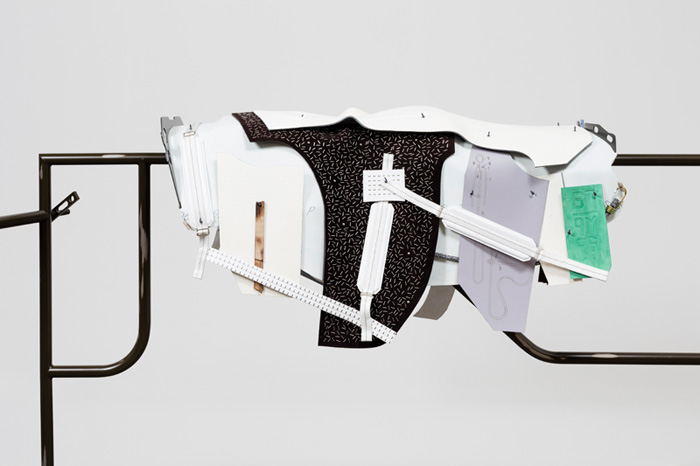


Magali Reus, ‘Harlequin Darts’ (detail), 2016. Donated to Hepworth Wakefield through a Special Partnership between Henry Moore Foundation and the Contemporary Art Society, supported by Cathy Wills
The Contemporary Art Society has acquired sculptures from three leading UK-based sculptors for The Hepworth Wakefield, through a Special Partnership between Henry Moore Foundation and the Contemporary Art Society, supported by Cathy Wills.
The four-year scheme supports Yorkshire as the UK centre of sculpture, with The Hepworth Wakefield and Leeds Art Gallery receiving major work by living artists each year.
Two works by Steven Claydon and Michael Dean are currently on display in the exhibition A Contemporary Collection, whilst a work by Dutch-born artist Magali Reus was included in the exhibition Material Encounters at the museum last year.
All three artists are familiar with the museum, having all been shortlisted for the Hepworth Prize for Sculpture between 2016 and 2018. Reus also had her first solo exhibition in the UK at The Hepworth Wakefield in 2015.
Steven Claydon (b. 1969, London, UK) works in an array of media including sculpture, painting, film, performance and music. A collector of cultural artefacts, Claydon repurposes objects into sculptures that are full of intentional contradictions. Presented without hierarchy, Claydon’s sculptural arrangements question the ways in which the museum and history ascribe value to objects and works of art. In the donated work – (Joanna) The Concealment and the Showing Forth, 2010 – objects including a wine bottle, glasses and a light bulb have been recreated in metal and wood. They are arranged on a structure that resembles a piano (‘Joanna’ in Cockney rhyming slang), highlighting the importance of music and sound in Claydon’s work.
Michael Dean’s (b. 1977, Newcastle upon Tyne, UK) sculptures begin with his own writing, which he translates into physical human-size forms using readily available objects. In FFFFFFFFF (WORKING TITLE), 2017, paperback books are combined with industrial building materials, such as concrete and steel, that are manipulated into abstract assemblages. Dean refers to concrete as a ‘democratic ceramic’, and in doing so politicises this ubiquitous building material, destabilising hierarchies between high and low art.
Magali Reus (b. 1981, The Hague, Netherlands) creates sculptural forms, often made in series. Her works are subtly suggestive of familiar machines or apparatus whose function and identity remains intentionally ambiguous. Reus often uses recognisable everyday objects as frameworks for her sculptures, and Harlequin Darts, 2016 alludes to the form of the horse saddle, motorcycles and blankets. In the work, Reus uses a series of complex techniques to process a variety of synthetic materials alongside fabric and leather. Like much of her work, the ‘saddle’ suggest proximity to the human body.